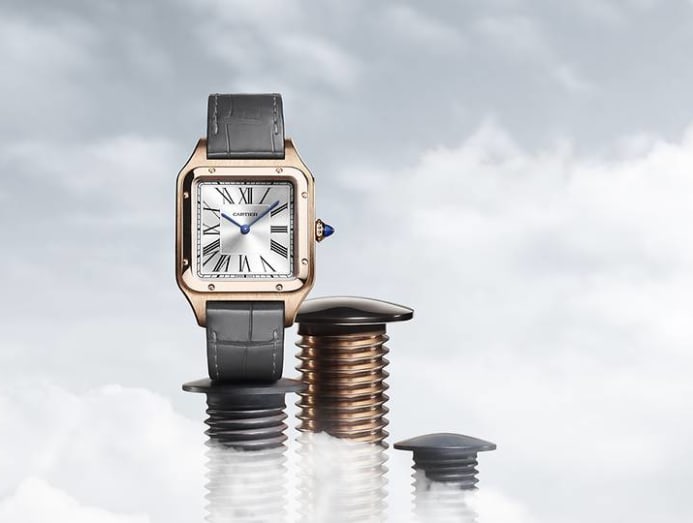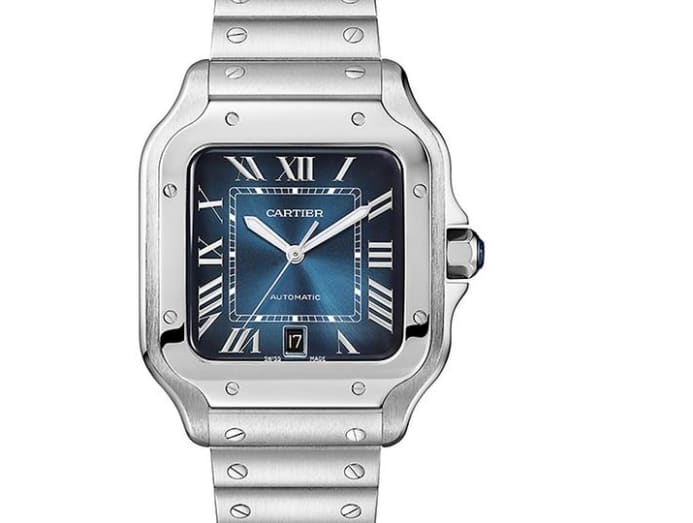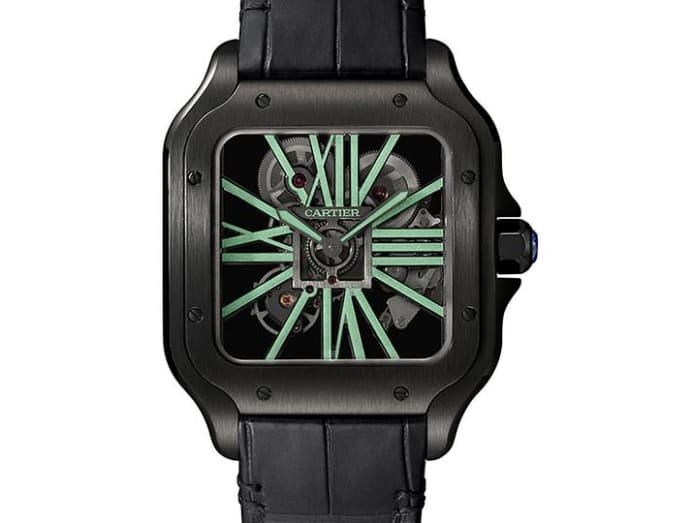A new lease of life for a century-old watchmaking icon, the Cartier Santos
At 115 years young, Cartier’s Santos gets a refresh with the new Santos-Dumont and Santos de Cartier collections, the former aimed at dressy gents while the latter trained on more audacious types.

(Photo: Cartier)
When your archive is as extensive as Cartier’s, you don’t have to look far for inspiration – just deep. And that’s exactly what the watchmaker-jeweller has done this year with the Santos, which has a history of over a century.
Already a much-beloved icon of the Parisian powerhouse, and a pillar collection in its stable of watches, the Santos received an update in the Santos-Dumont and Santos de Cartier lines.
For the uninitiated, the Santos takes its name from Brazilian aviator Alberto Santos-Dumont, for whom the original timepiece was created in 1904. Fitted with a leather strap to allow Santos-Dumont hands-free telling of time, the watch went down in history as being one of the first, if not the first, wristwatch for men. This, you’ll remember, was an era when pocket watches still ruled.
Harking back to the finesse of the early 20th century, the new Cartier Santos-Dumont sports an elegantly gaunt case (just 7mm high) in all-gold, steel and gold, or all-steel. Enabling this svelteness is the use of a new in-house quartz movement. What’s even better is that this high-performance, energy-efficient engine has a battery built to last six years – twice as long as regular batteries.

Design-wise, the bezel with its distinctive screws – a design element found on the 1904 original – makes a triumphant comeback after years of absence. To further modernise the watch, Cartier stretched out the Roman numerals on the dial, giving it a sleek, elongated profile.
If the Santos-Dumont is the dapper dresser, then the Santos de Cartier is its spunkier, swaggering cousin with more pronounced lines and a sportier overall aesthetic. Several variations are available (yellow gold, pink gold, steel, steel-and-gold), although the model with the blue dial (available only in steel) stands out from the pack. The lustre emanating from the radial sunburst gradient dial is a sight for sore eyes.
READ> SIHH 2019 Trend Report: Blue dials continue to stage a strong, stylish showing

The chronograph model is another stand-out, not least because of the left-hand positioning of the start/stop button (the reset function is integrated in the crown) that makes it easier to operate the stopwatch using the thumb. This is thanks to the use of a new in-house movement, 1904-CH MC, which has a column-wheel construction with vertical clutch, features typical of high-end chronograph movements. With this development, it’s clear that Cartier is ending its reliance on ETA movements.

If a manufacture movement isn’t enough of a technical feat for you, there’s also the skeleton model. This series features a stripped-down, bare-bones aesthetic that reveals the watches’ beating hearts: Meticulously finished manual-winding movements.

What we appreciate most, however, are the QuickSwitch mechanism and EasyLink systems that are available on the Santos de Cartier collections. Introduced in 2018, QuickSwitch makes it a cinch to remove the bracelet without any tools, so you can swop between leather straps and metal bracelets depending on the occasion, the weather, and, well, your mood. The EasyLink system, meanwhile, lets you add or remove links with the simple push of a button on the underside of each link, making for easy adjustment of the bracelet length.





